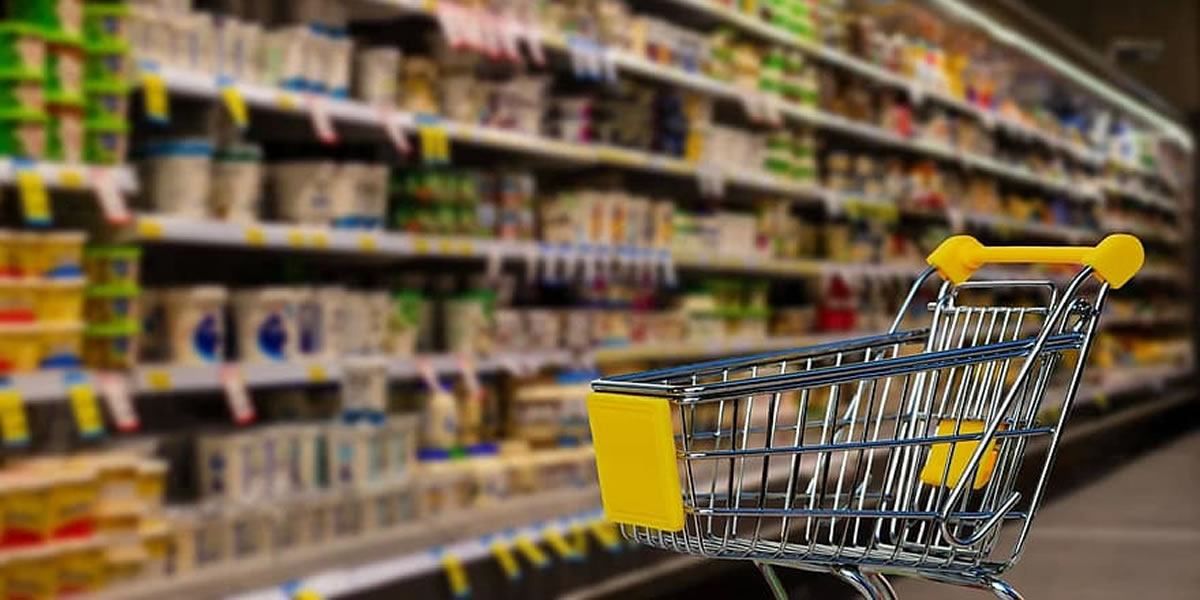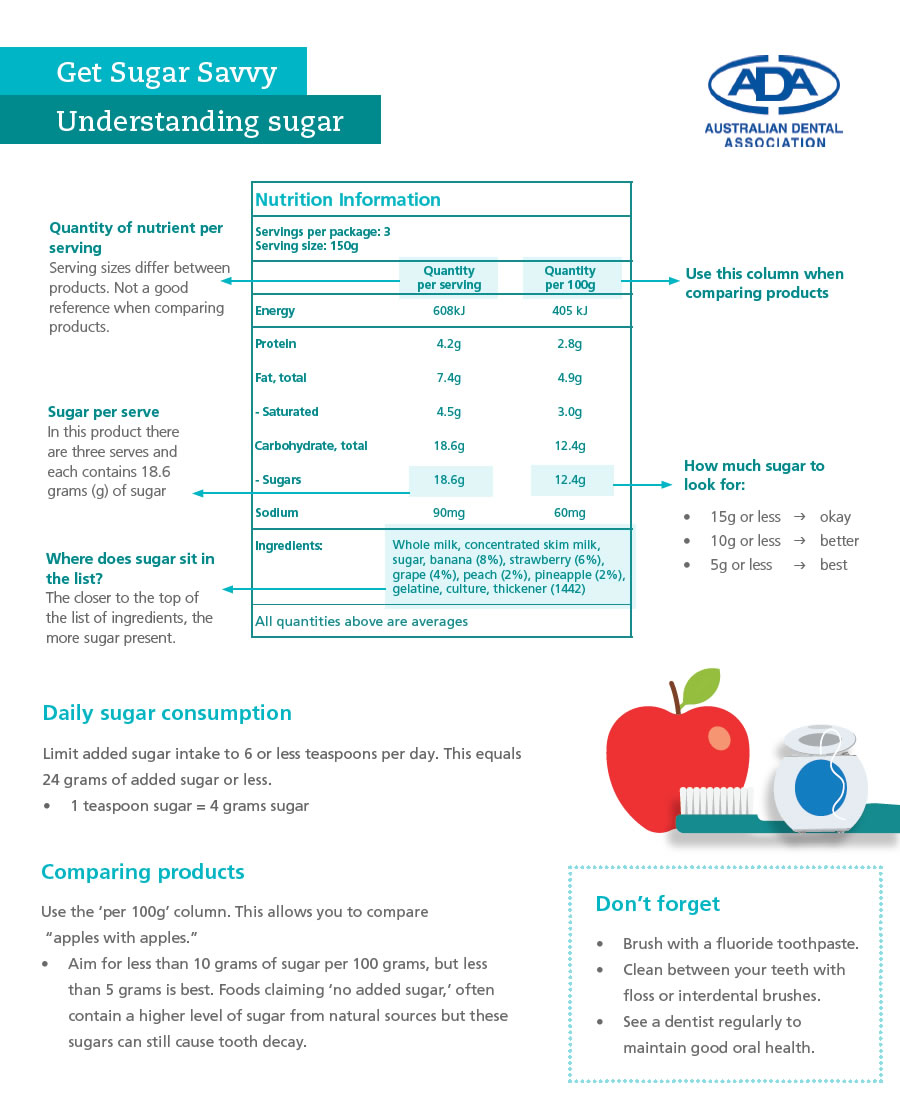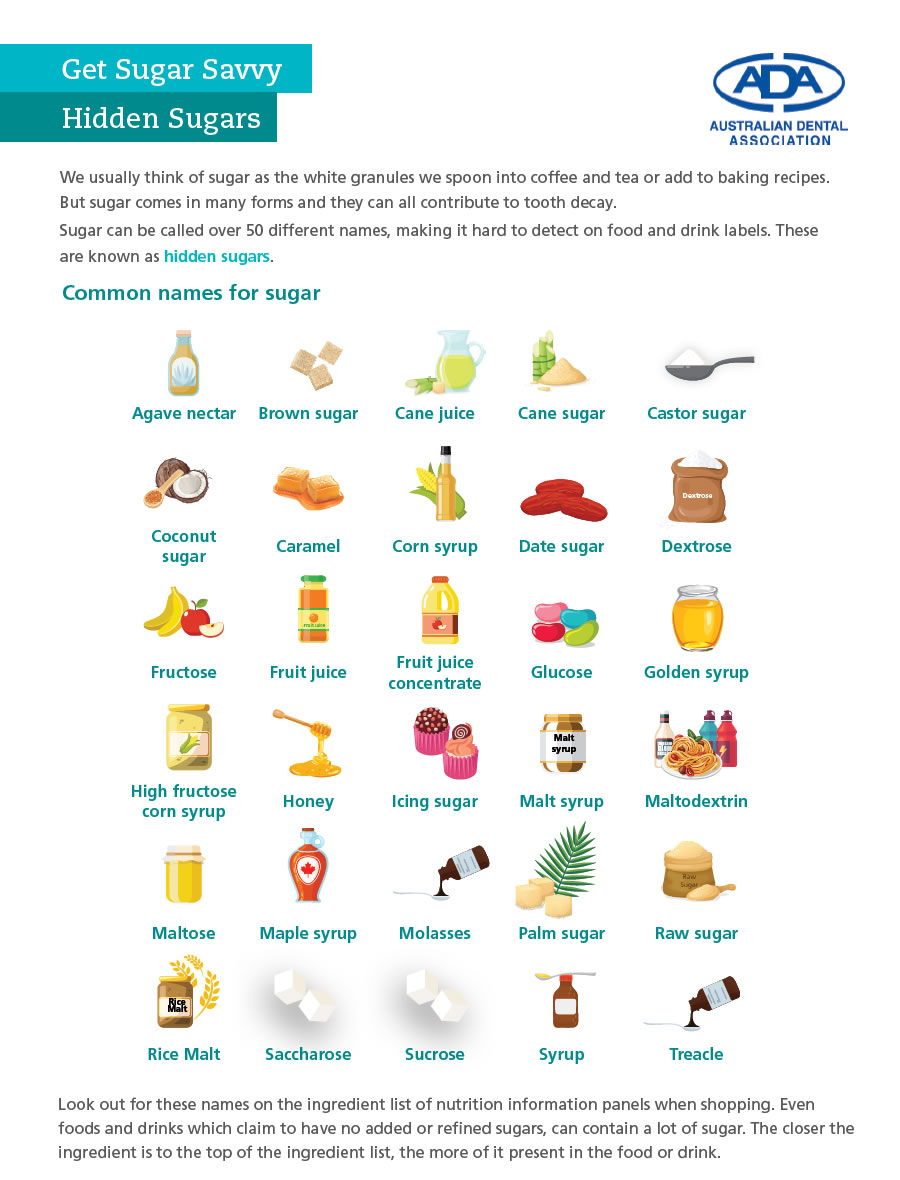
03 Aug How Much Sugar is Hiding in Your Trolley
Dental Health Week 3-9 August 2020- How Much Sugar Is Hiding in Your Trolley?
This week marks Australian Dental Health Week, and this year the focus is on sugar consumption & how it affects our health. While it’s easy to think we all make good health & nutritional decisions, the reality is, it can be a lot harder than it looks. Many foods in supermarkets contain high amounts of free sugars, and reading labels for ingredient lists & nutritional information can be extremely confusing.
Current stats show that nearly 75% of young people aged 14-18 are consuming too much sugar, and nearly 50% of adults over 18 are consuming too much sugar in their daily diet. The World Health Organisation recommends no more than 6 teaspoons (or 24g) of free sugar be consumed per day. We should also be looking at choosing foods with less than 10g of sugar per 100 grams.
So what are ‘free sugars’ you ask? This is where it can get complicated. Sugar is hidden in many products and listed as an ingredient you aren’t familiar with. Free sugars are those sugars that are easily accessible by the body for use, and include glucose, galactose, fructose, and table sugar. When reading food labels, it is important to remember that free sugars are found in such things as honey, natural syrups such as rice malt and maple syrups, fruit juices & fruit juice concentrates. There are sugars in almost everything we consume, but when those sugars are found in whole fruit & vegetables, they tend to be digested more slowly & take longer to enter the blood stream, and therefore don’t need to be included in daily sugar consumption.
Free sugars is a more precise definition of the term ‘added sugars,’ which is widely used in the food industry to describe foods that do not have sugars added to them, but it doesn’t include sugars found in things such as fruit juice & concentrates.
So what to look at when reading food labels? It is best to look at the amount of sugar per 100g as opposed to per serve, as serving sizes may differ between similar products. It is best to look for foods with less than 5g of sugar per 100g, though up to 10g is also acceptable. This doesn’t always give an accurate value of added sugars though, and so looking at the ingredient list is also important. The higher the ingredient is in the list, the more of it is present in the item.
But to make things more complicated, free sugars can go by more than 50 names, and its not just in obvious foods such as cakes & lollies that include sugar. Free sugars can also be found in many sauces, cereals, muesli bars, among many others. Below is a list of some of the most commonly found sugars in foods:
- Cane sugar
- Dextrose
- Glucose
- Fruit juice concentrate
- Fructose
- Coconut sugar
- Golden syrup
- Honey
- High fructose corn syrup
- Malt syrup
- Molasses
- Palm sugar
- Maltose
- Rice malt
- Treacle
- Maltodextrin
- Corn syrup
So what can you do to help improve your dental health? Firstly good oral hygiene habits such as brushing twice daily with a fluoride toothpaste & flossing daily can help reduce the amount of bacteria able to metabolise sugars into acid that causes tooth decay. Also, chewing a sugar free gum can help stimulate saliva which also protects the teeth & neutralizes the acids produced by eating & drinking foods high in sugar. Visit www.shopbypaulbeathdental.com for your sugar busting products.
It is also important to know how to convert grams of sugar to teaspoons, to get a better idea of how much sugar you are consuming. 1 teaspoon of sugar = 4grams, so if a drink label says it contains 20g of sugar this means it is equal to 5 teaspoons of sugar.
To get more information, talk to your dentist or hygienist about sugar consumption. The Australian Dental Association & Dental Health Week websites also have additional information on sugars & how to read labels. Click to make your next appointment or phone our lovely front desk on 02 4961 6300.
Emily Smith, Oral Health Therapist



Sorry, the comment form is closed at this time.